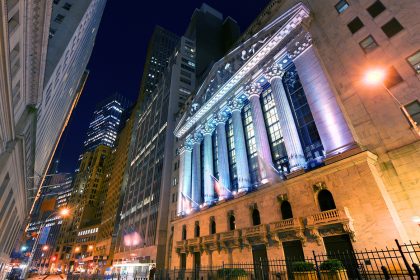On Friday, the S&P 500 index closed 1.12% or 37.54 points down, at 3,319.47. The close was below S&P 500’s 50-day moving average for the first time since April. At the moment of writing, it is even lower, at 3264.41.
This fall has brought volatility and uncertainty to stock markets. Not only the second coronavirus wave seems to lead to another flush of lockdowns but also political tensions are repelling investors from buying assets. With this background, U.S. stocks are set to open sharply lower today, with S&P 500 (INDEXSP: .INX), Nasdaq Composite (INDEXNASDAQ: .IXIC), and Dow Jones Industrial Average (INDEXDJX: .DJI) indices sinking.
S&P 500: Worst September since 2011
On Friday, the S&P 500 index closed 1.12% or 37.54 points down, at 3,319.47. The close was below S&P 500’s 50-day moving average for the first time since April. At the moment of writing, it is at 3264.41.
John Stoltzfus, the chief investment strategist for Oppenheimer Asset Management, said:
“So far, the market has over-shot our expectations for a 4% to 6% haircut from recent highs on near-term extended valuations, as well as economic and Covid-19 risks. That said, the declines through last Friday are not all that surprising.”
He further added:
“It is that September — traditionally but not always — can be tough month for stocks. The S&P 500 had delivered a massive rally rising 60% from the lows on March 23 through September 2. Markets tend to overshoot to the upside as well as to the downside.”
As for other indices, they also fell, having their worst month since March. Nasdaq Composite lost 1.07% on Friday, Dow Jones closed 0.88% down. All three indices have notched their third weekly loss in a row.
Craig Johnson, the senior technical research analyst at Piper Sandler, said:
“If you look at the chart of the S&P 500, we broke out above the prior highs we had seen in February. Now we’re starting to come back in underneath that. Technically, that’s a sign of weakness, when you start seeing those breakdowns below those prior highs.”
According to Johnson, S&P seems to go down to its 200-day moving average around 3,100 or even lower, anywhere from a 7-10% decline from Friday’s closing levels.
Tech and Banking Stocks Plummeting
Amid the coronavirus concerns, big tech stocks are declining along with S&P 500, Nasdaq Composite and Dow Jones. Apple Inc (NASDAQ: AAPL), Facebook Inc (NASDAQ: FB), Amazon.com Inc (NASDAQ: AMZN), and Microsoft Corporation (NASDAQ: MSFT) stocks each down about 2% in the pre-market.
Cruise Royal Caribbean Group (NASDAQ: RCL) stock fell by over 5% in early trading. Airline stocks including United Airlines Holdings Inc (NASDAQ: UAL), Southwest Airlines Co (NYSE: LUV) and Delta Air Lines Inc (NYSE: DAL) were each down at least 4%.
As far as the banking sector is considered, it will likely open sharply in the red following the reports about some of the largest banks doing business for years with their entities being suspicious for regulators. In particular, Deutsche Bank has reportedly facilitated more $1 trillion in suspicious transactions to the U.S. government in over two decades. Amid the news, stocks of other banks fell as well. Banks including Barclays (LON: ), HSBC Holdings (NYSE: ), and Standard Chartered (OTC: ) dropped in European trade, JPMorgan Chase (NYSE: ) and Bank of New York Mellon (NYSE: ) have followed suit.
The Second COVID-19 Wave
There are also rising fears of a second coronavirus wave. European countries like Spain and France see an alarming rise in new cases of coronavirus, the US is reporting a sharp increase in COVID-19 cases as well. In the last 24 hours, the number of new patients with the confirmed virus has totaled 249,134 people.
If the pandemic stays more or less under control, the major averages may strengthen into year-end, which could lead to outperformance of stocks.
Daria is an economic student interested in the development of modern technologies. She is eager to know as much as possible about cryptos as she believes they can change our view on finance and the world in general.




